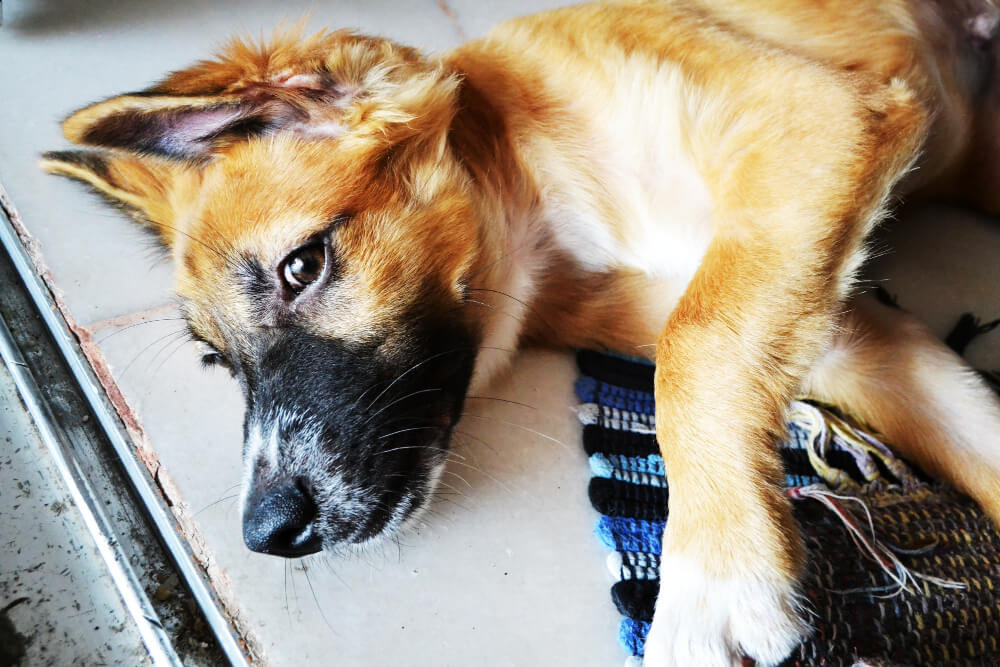Mad cow disease, officially known as bovine spongiform encephalopathy (BSE), is a serious condition in cattle that can have implications for other species, including dogs. Although dogs cannot contract the disease in its exact form, the potential risks tied to contaminated food products have raised concerns among pet owners.
In this article, we’ll explore the connection between mad cow disease and dogs, the symptoms to watch for, and how to protect your furry friend from related health risks.

What Is Mad Cow Disease?
Mad cow disease is a fatal neurodegenerative condition in cattle caused by prions—abnormal proteins that damage the brain and spinal cord. The disease gained widespread attention in the late 20th century due to outbreaks linked to contaminated feed.
While dogs cannot develop BSE itself, exposure to prions through certain contaminated foods may lead to a similar condition called canine spongiform encephalopathy (CSE). Cases of CSE are exceedingly rare but have been documented in regions where BSE outbreaks occurred.
Can Dogs Get Mad Cow Disease?
Dogs are not natural hosts for BSE. However, they can potentially be exposed to prions if their diet includes contaminated meat or bone meal. This risk is primarily tied to:
- Pet food contamination: Low-quality products made with poorly regulated ingredients.
- Geographic location: Regions with a history of BSE outbreaks may pose higher risks.
It’s important to note that modern pet food regulations have significantly reduced the risk of such contamination.
Symptoms of Canine Spongiform Encephalopathy (CSE)
CSE symptoms in dogs are similar to those of BSE in cattle and include:
Neurological Signs
- Uncoordinated movements or staggering.
- Muscle tremors or twitching.
- Behavioral changes such as anxiety or aggression.
Cognitive Changes
- Confusion or disorientation.
- Difficulty responding to commands.
Physical Decline
- Weight loss despite normal appetite.
- Gradual loss of motor function.
These symptoms typically worsen over time as the disease progresses, ultimately leading to severe neurological impairment.
Diagnosing Prion Diseases in Dogs
Prion diseases like CSE are extremely rare in dogs, and diagnosis can be challenging. If your dog shows signs of neurological decline, your veterinarian may perform:
- Neurological exams: To assess coordination, reflexes, and behavior.
- Imaging tests: MRI or CT scans to rule out other brain conditions.
- Tissue analysis: Prion diseases can only be definitively diagnosed through post-mortem brain tissue examination.
How to Protect Your Dog
While the risk of prion diseases in dogs is minimal, these steps can help ensure your pet’s safety:
1. Choose High-Quality Pet Food
- Opt for reputable brands with strict ingredient sourcing and quality control.
- Look for labels indicating the food meets AAFCO standards for safety and nutrition.
2. Avoid Raw or Undercooked Meat
- Feeding raw meat can pose risks if the source is unknown or unregulated.
- Stick to cooked or commercially prepared dog foods.
3. Stay Informed
- Be aware of any recalls or warnings about pet food contamination.
- If you live in an area with a history of BSE outbreaks, exercise extra caution with food sourcing.
4. Regular Vet Check-Ups
- Routine veterinary visits can catch health issues early.
- Discuss any unusual symptoms or behaviors with your vet promptly.

Differences Between CSE and Other Neurological Disorders
Many conditions can mimic the symptoms of CSE, making it crucial to explore all possibilities. Some common neurological disorders in dogs include:
- Epilepsy: Characterized by recurring seizures.
- Canine Distemper: A viral disease causing neurological and respiratory symptoms.
- Brain tumors: Which can affect balance, coordination, and behavior.
Accurate diagnosis by a veterinarian is essential to determine the exact cause and ensure appropriate treatment.
Final Thoughts
While the connection between mad cow disease and dogs may sound concerning, the risk to your furry friend is incredibly low due to stringent food safety measures. By choosing high-quality pet food, avoiding raw meat, and staying vigilant about their health, you can provide your dog with the protection they need.
As always, if your dog shows any unusual symptoms, consult your veterinarian for guidance. Your quick action and care can make all the difference in keeping your pup happy and healthy.
For more pet care tips and health insights, visit DogTalkBoy—your trusted source for everything canine!








